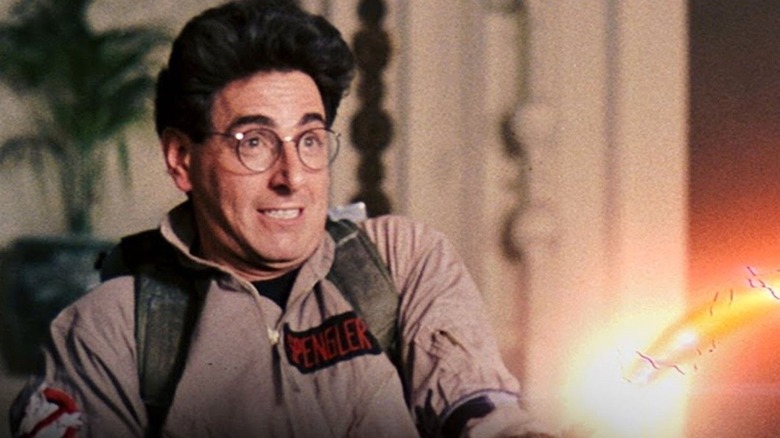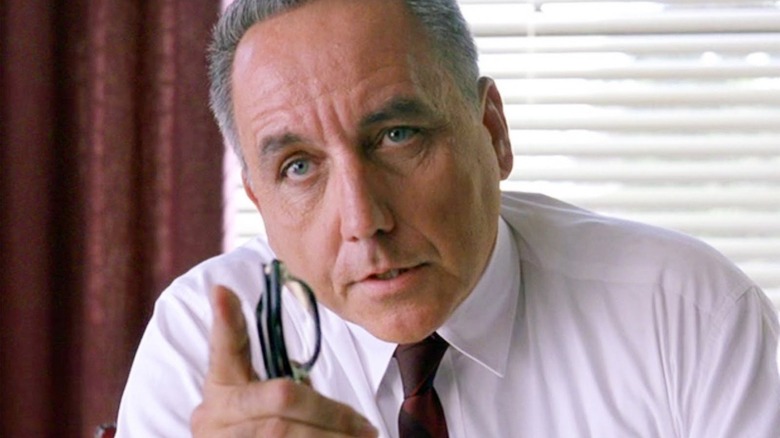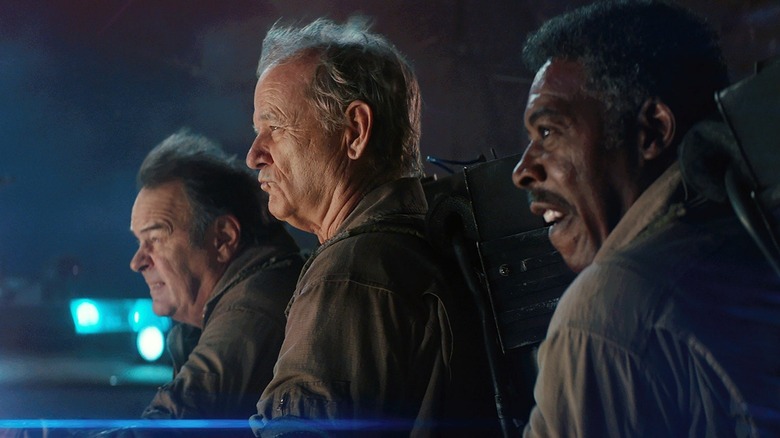Ghostbusters: Afterlife Cast Shawshank Redemption Actor Bob Gunton As Egon's Stand-In
The finale of "Ghostbusters: Afterlife" has proven to be somewhat of a demarcation line for viewers. Either you buy into the sentimental nostalgia of seeing Harold Ramis' Egon make one final appearance on screen or you don't and it comes off as incredibly ghoulish.
I'm personally in the former camp. Seeing Ramis on screen again, even in a CGI capacity, standing shoulder to shoulder with Bill Murray, Dan Aykroyd, and Ernie Hudson to finally put Gozer in her place was a full-circle moment that made me feel all warm and fuzzy inside. I totally get the grinches on this one, though. The very idea of bringing back a dead actor on-screen is sketchy to begin with and the history of doing so on film isn't exactly flawless.
Love it or hate it, you have to admit on a technical level Jason Reitman and his team executed it pretty well. I buy this more than Princess Leia and Grand Moff Tarkin in "Rogue One," for instance. In order to pull this effect off, not only did they have to hire the best of the best of the digital effects world, they also cast one of our best character actors as his stand-in.
The Ending Hinged On A Hug
Bob Gunton is probably best known for playing the villainous Warden Norton in Frank Darabont's "The Shawshank Redemption," but he's surely popped up in your favorite film and TV over the years. He's a "That Guy" actor. You know his face and recognize him when he pops up, which makes it all the more ironic that his contribution to "Ghostbusters: Afterlife" is unrecognizable.
He stood in for Ego in the prologue and the VFX team used a scan of his actual face to help age up their photo-real Egon, which was built on his look in the original film.
Reitman recently revealed a lot about the journey to get Egon on-screen one more time to The Wrap's Drew Taylor and not only revealed Gunton's role in bringing the Ghostbuster back, but also a little of his reasoning. This is the story of a family, after all, and the director intended the emotional core to be the focus of the ending, not spectacle.
"The idea was about generational forgiveness and being able to say goodbye and to accomplish that, we were going to have to create an impossible moment on screen, a moment in which the four Ghostbusters stand next to each other one last time, a moment in which the original Ghostbusters get to say goodbye to Egon, who was my favorite Ghostbuster. And a moment in which a granddaughter gets to meet her grandfather for the first time and a woman gets to forgive and embrace her father."
He went so far as to say he wanted the movie to end with a hug, not an explosion, and maybe that's why I responded so well to it. If they just brought Egon back only to throw down in a big world-ending action scene I would have rejected it, but by this point I was ready to see Egon make amends with his daughter and connect with his granddaughter, so the emotional finale worked for me.
The Impressive Digital Team Behind The Effect
MPC is the company that handled the CGI Egon and they've had some practice. They recently brought 1982-era Sean Young into "Blade Runner 2049" and did a similar move at the beginning of "Terminator: Dark Fate," as well as having helped create the photorealistic animals in Jon Favreau's "The Lion King" and "The Jungle Book." They used the wrinkles from Gunton's face to help make Egon look as realistic as possible, all the while bringing in a real actor's real performance to stick that emotional landing.
Your mileage may vary, but I think it worked and hopefully next time Gunton gets cast in a big franchise movie we'll get to his face.


